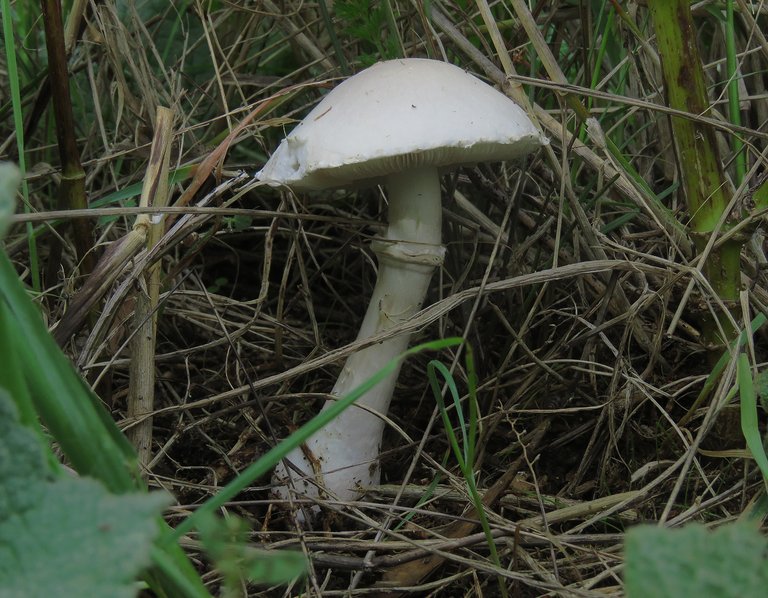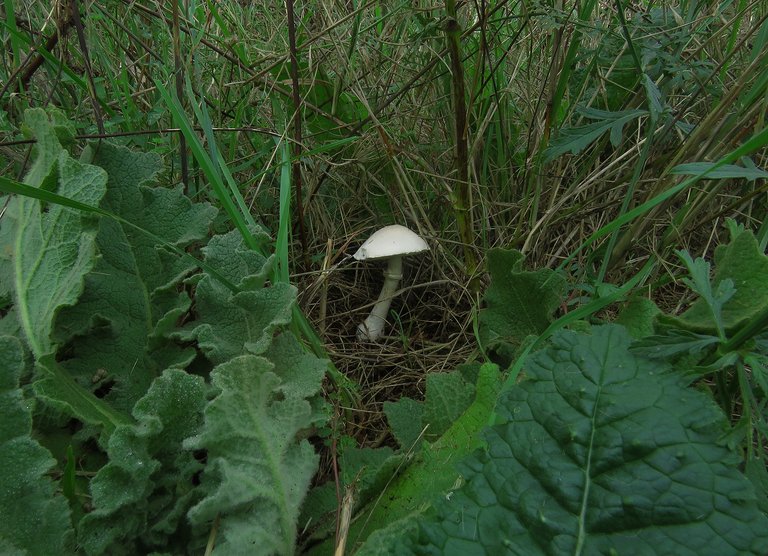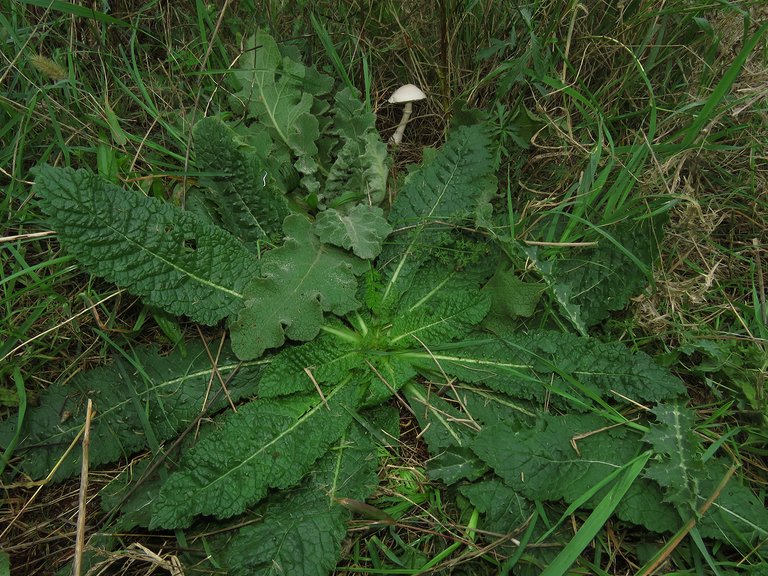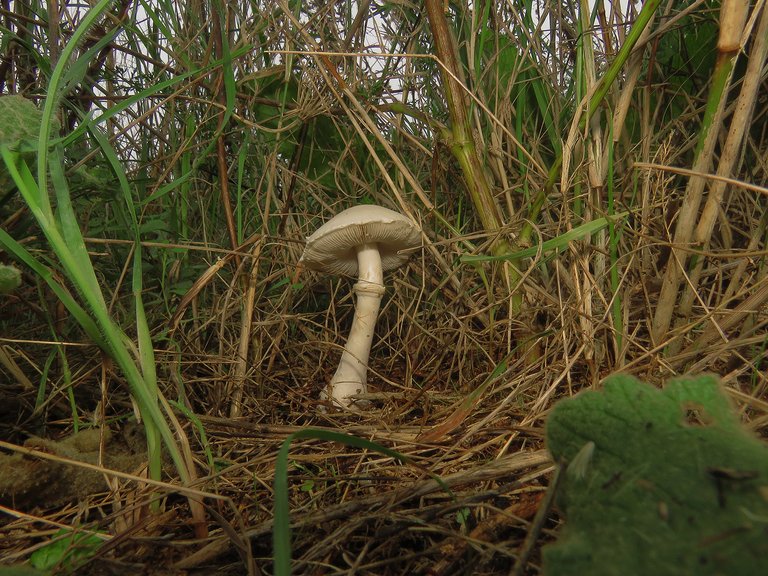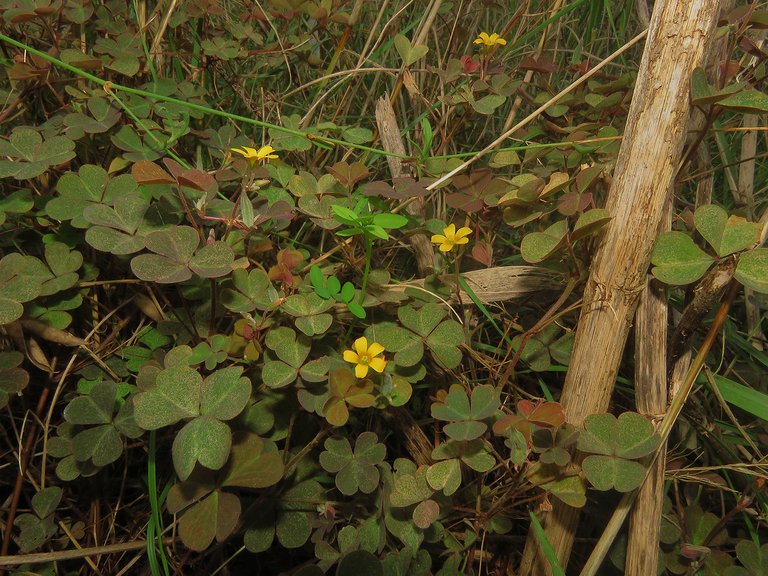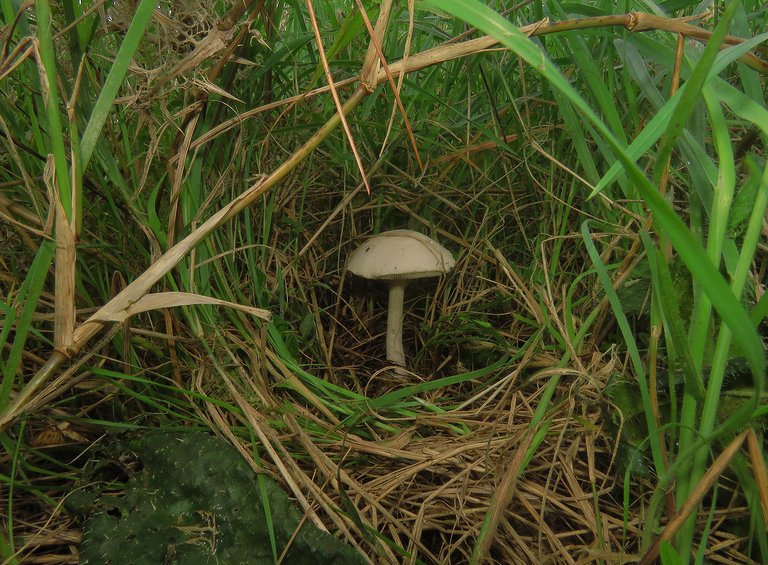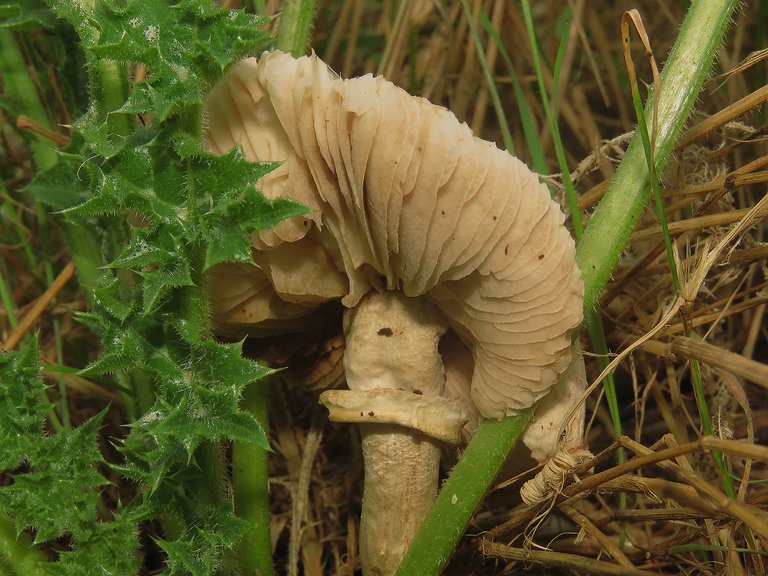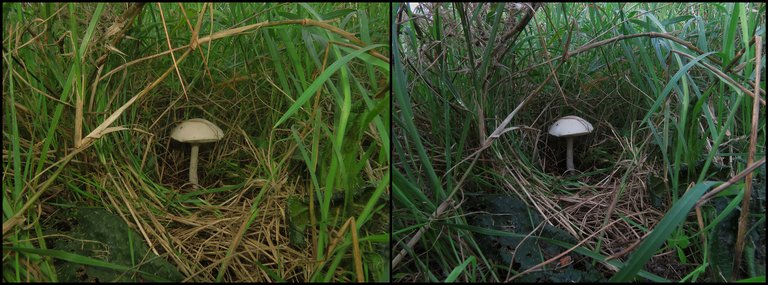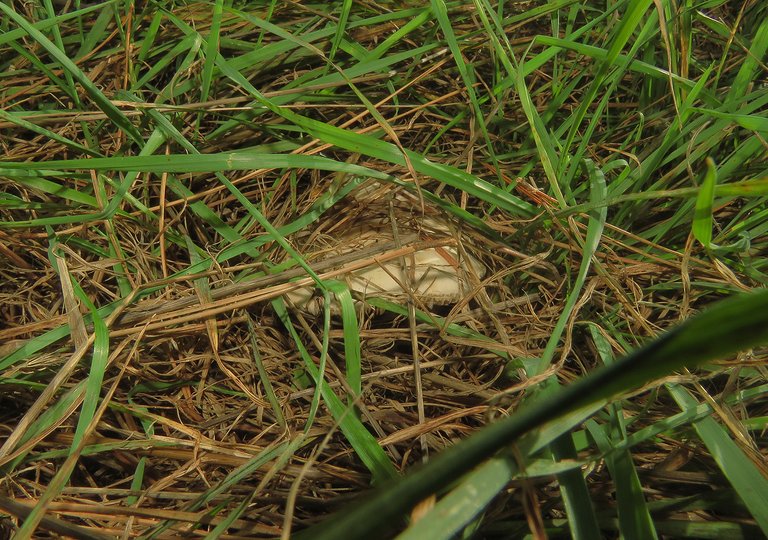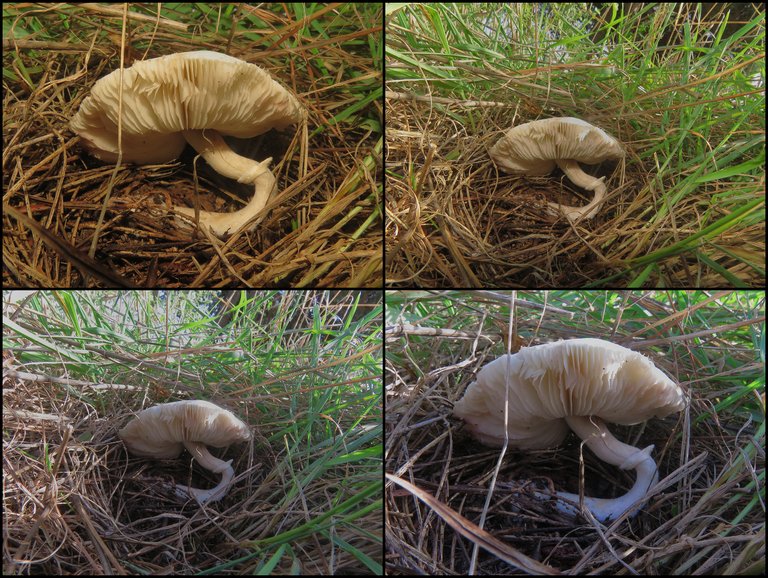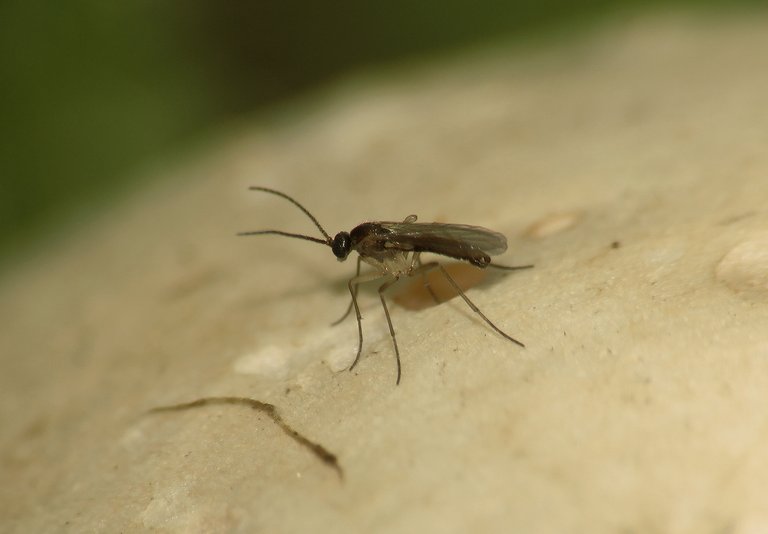On the 9th of November this year, I spent the whole afternoon in the abandoned stone quarry in Marlera, the coastal area situated a couple of kilometers from the village of Liznjan and about five or six kilometers from where I live. I found some interesting spiders and insects there but all that material will appear in a long, I would even dare to say epic, post I'll be ready to publish at the end of the year.
For today's more modest post, I prepared some elegant white mushrooms ...
... and lovely yellow flowers, I came across on my way to the quarry, on the stony terrain only about fifty meters from the entrance.
Having the setting of the post in mind, the most interesting aspect of the mushrooms I'm presenting today is their existence.
That stony part of Marlera isn't a fungi-friendly environment. I don't remember seeing a mushroom there in all the years I regularly rambled the area.
In the following photograph, you can see the same scene and the same mushroom, but ...
... but I zoomed out a bit so that you can see more of the surrounding vegetation.
The large folded leaves in the foreground belong to the Verbascum undulatum plant. The milk-white mushroom looks great in all that greenery.
Here I zoomed out even more. Dipsacus fullonum is the most prominent plant whose large leaves created the rosette in the center of the shot.
Leucoagaricus leucothites is a robust, meaty mushroom, certainly not a small one, but it surely does look small in this photograph compared to the nearby plants.
Here I came closer to the mushroom and dug a shallow hole in the ground that allowed me to put the camera in a position that could capture the gills on the underside of the cap.
Just like the upper side, the gills are white. Everything is white on this mushroom, even its scientific name. Both parts of the two-word name include the Ancient Greek leuco which means white, pale, or colorless.
The yellow flowers promised in the title ...
... belong to the Oxalis corniculata ...
... a plant that probably comes from southeastern Asia but was introduced to Europe a long time ago. A couple of hours ago, while preparing this post, I found that it was first described by Linnaeus in 1753, and the dude, I mean Linnaeus, used specimens from Italy. It also seems that Linnaeus knew the plant had been introduced to Italy from the east before 1500. Italy isn't far from here where I live so, yeah, let's assume that the plant has been here since those good old times, and if we are wrong - who cares?
Oxalis corniculata is a very cosmopolitan plant, that's for sure. It generally appears in civilized areas like parks & gardens, but is not so unusual to find it in forests, scrublands, and meadows.
At one point, while I was busy photographing one of the Leucoagaricus leucothites fruiting bodies ...
... a small fungus gnat landed on the top of the cap ...

... or more precisely, on some seeds that were lying on the top of the white cap. When that gnat flew away ...
... another one, with a considerably thicker abdomen, took the same place less than a minute later.
I can confidently say that these tiny flies belong to the Sciaridae family, but I can't tell you the name of the species.
If you take a good look at the upper left corner of this shot, you'll notice a small blurred detail that looks like a bit of dark dirt on the white surface of the cap.
In the following photograph ...
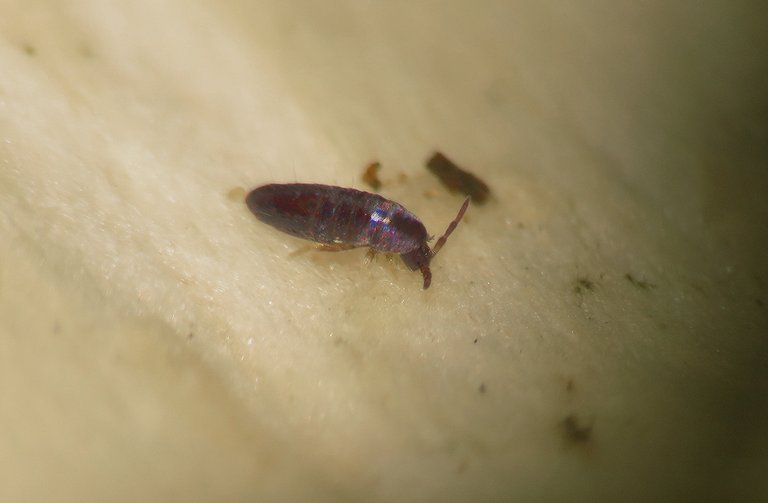
... I came closer to the detail and put it in focus so you could now recognize a tiny arthropod in what was just a blurred stain in the previous picture.
This is the Lepidocyrtus cyaneus, a springtail from the Entomobryidae family.
As the young Leucoagaricus leucothites fruiting bodies grow and develop in this environment, they often get deformed by the obstacles provided by the surrounding vegetation.
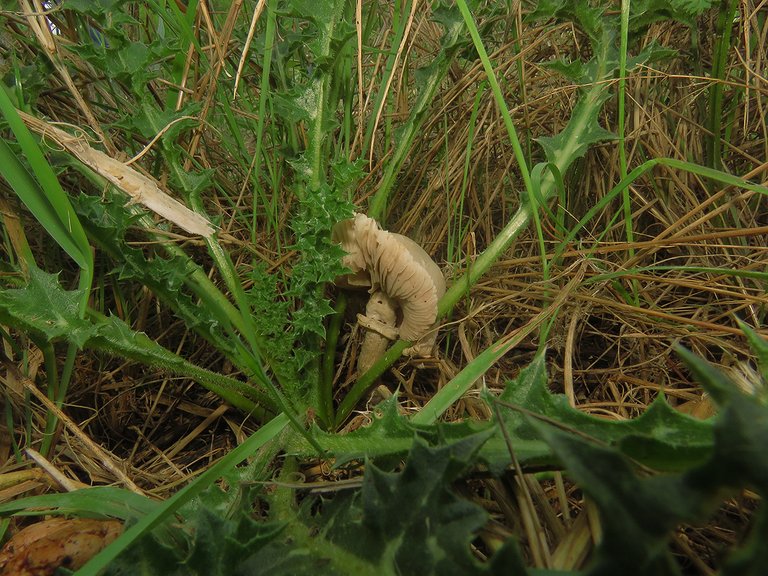
In this, the previous, and the following shot, the mushroom has grown among the leaves of the Scolymus hispanicus thistle.

Many herbaceous plants that grow in the stony parts of Marlera are resilient and sturdy.
The Leucoagaricus leucothites mushroom shown in these two shots has grown surrounded by tall grass so the fruiting body is a perfect parasol.
The photograph on the right was taken in ambient light, while for the one on the left, I used the flash of my camera. The difference isn't big or important, but is still noticeable. I mean, I like to experiment with light, that's what I wanted to say.
Sixteen days ago, on the 15th of November, I came across Leucoagaricus leucothites in the coastal area near the harbor of Liznjan, four or five kilometers from Marlera.
Most of the fruiting bodies there were growing in the dense layer of bent grass, and were barely visible. Some of those mushrooms ...
... were contorted in an interesting way.
The following link can take you to that old post if you wish to see more :
https://ecency.com/hive-166168/@borjan/deep-in-the-grass
In the following photograph ...
... one of those taken on the 9th of November in Marlera, you can see another fungus gnat on the top of the Leucoagaricus leucothites cap.
In this wide shot, besides the interesting Mediterranean vegetation and the mushroom you already saw quite a few times in today's post, you can also see the white fragments of the unpaved stony road that leads to the quarry.
Here you can take one last look at the Oxalis corniculata plant.
AND THAT'S IT. HOPE YOU DIDN'T FIND THIS PHOTO STORY WITH ONLY ONE MUSHROOM SPECIES TOO BORING AND REPETITIVE. AS ALWAYS HERE ON HIVE, THE PHOTOGRAPHS ARE MY WORK.
Oh, I almost forgot! This is a contribution to #FungiFriday by @ewkaw
The following links will take you to the sites with more information about the protagonists of this post. I found some stuff about them there.
https://en.wikipedia.org/wiki/Leucoagaricus_leucothites
https://en.wikipedia.org/wiki/Oxalis_corniculata
https://en.wikipedia.org/wiki/Sciaridae
https://en.wikipedia.org/wiki/Lepidocyrtus_cyaneus

